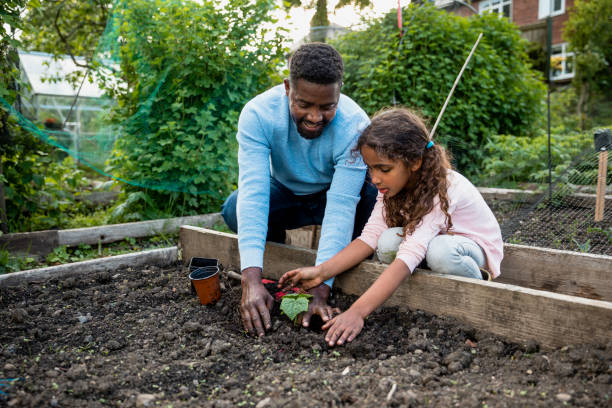How to Start a Vegetable Garden for Beginners
Starting a vegetable garden can be a rewarding and fulfilling experience, especially for beginners. Whether you have a spacious backyard or a small balcony, growing your own vegetables is a great way to enjoy fresh, organic produce while connecting with nature. This guide will walk you through everything you need to know to start your first vegetable garden successfully.
Table of Contents
Why Start a Vegetable Garden?
Step-by-Step Guide to Starting a Vegetable Garden
Choose the Right Location
Decide What to Grow
Prepare the Soil
Plant Your Vegetables
Water and Mulch
Maintain Your Garden
Tips for Success
FAQs About Starting a Vegetable Garden
Why Start a Vegetable Garden?
Growing your own vegetables offers numerous benefits:
Fresh, Organic Produce: Enjoy vegetables free from pesticides and chemicals.
Cost Savings: Reduce grocery bills by growing your own food.
Health Benefits: Gardening is a great way to stay active and reduce stress.
Environmental Impact: Reduce your carbon footprint by growing food locally.
Step-by-Step Guide to Starting a Vegetable Garden
1. Choose the Right Location
The success of your vegetable garden depends on choosing the right spot. Here’s what to look for:
Sunlight: Most vegetables need at least 6-8 hours of direct sunlight daily.
Soil Drainage: Ensure the area has well-draining soil to prevent waterlogging.
Accessibility: Pick a location that’s easy to access for watering and maintenance.
Tip: If you have limited space, consider container gardening or vertical gardening.
2. Decide What to Grow
As a beginner, start with easy-to-grow vegetables that are low-maintenance. Some great options include:
Leafy Greens: Lettuce, spinach, and kale.
Root Vegetables: Carrots, radishes, and beets.
Fruiting Vegetables: Tomatoes, peppers, and zucchini.
Pro Tip: Check your local climate and growing season to choose vegetables that thrive in your area.
3. Prepare the Soil
Healthy soil is the foundation of a successful garden. Follow these steps to prepare your soil:
Test the Soil: Use a soil test kit to check pH and nutrient levels. Most vegetables prefer a pH of 6.0-7.0.
Amend the Soil: Add compost or organic matter to improve soil structure and fertility.
Remove Weeds: Clear the area of weeds and debris before planting.
4. Plant Your Vegetables
Once your soil is ready, it’s time to plant. Follow these guidelines:
Follow Spacing Instructions: Give each plant enough space to grow.
Plant at the Right Depth: Check seed packets or plant tags for specific instructions.
Water After Planting: Gently water the soil to help plants establish roots.
Tip: Consider starting with seedlings instead of seeds for faster results.
5. Water and Mulch
Proper watering is crucial for a healthy garden. Here’s how to do it right:
Water Deeply: Water the soil, not the leaves, to encourage deep root growth.
Mulch: Apply a layer of mulch (e.g., straw or wood chips) to retain moisture and suppress weeds.
Pro Tip: Water early in the morning to reduce evaporation and prevent fungal diseases.
6. Maintain Your Garden
Regular maintenance ensures your garden thrives:
Weed Regularly: Remove weeds that compete for nutrients and water.
Fertilize: Use organic fertilizers to provide essential nutrients.
Monitor for Pests: Check plants regularly for signs of pests or diseases.
Tips for Success
Start Small: Begin with a few easy-to-grow vegetables to avoid feeling overwhelmed.
Keep a Garden Journal: Track planting dates, growth progress, and lessons learned.
Be Patient: Gardening is a learning process, and mistakes are part of the journey.
FAQs About Starting a Vegetable Garden
1. What is the easiest vegetable to grow for beginners?
Some of the easiest vegetables for beginners include lettuce, radishes, green beans, and zucchini.
2. How much space do I need for a vegetable garden?
You can start with as little as 10 square feet. Container gardens are perfect for small spaces like balconies or patios.
3. How often should I water my vegetable garden?
Most vegetables need about 1-2 inches of water per week. Adjust based on weather conditions and soil type.
4. What tools do I need to start a vegetable garden?
Basic tools include a trowel, gloves, watering can or hose, and a rake.
5. Can I grow vegetables in pots or containers?
Yes! Many vegetables, like tomatoes, peppers, and herbs, grow well in containers. Just ensure they have proper drainage.
6. How do I protect my garden from pests?
Use natural methods like companion planting, neem oil, or introducing beneficial insects like ladybugs.
7. When is the best time to start a vegetable garden?
The best time depends on your climate. In most regions, spring is ideal for planting after the last frost date.
Conclusion
Starting a vegetable garden as a beginner doesn’t have to be intimidating. By following these steps and tips, you’ll be well on your way to growing your own fresh, delicious vegetables. Remember, gardening is a journey, so enjoy the process and celebrate your successes along the way.
Happy gardening! 🌱

